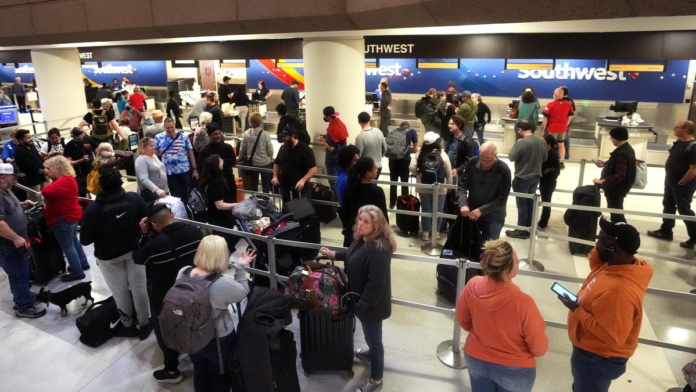Severe winter weather has caused thousands of flights to be cancelled across the US over the last several days. The vast majority of those were operated by a single airline: Southwest.
Out of 2,911 cancelled flights on Dec. 27, 2,532 were operated by Southwest, according to tracking service FlightAware. That’s 63% of Southwest’s scheduled flights that day.
The rash of cancellations has prompted an inquiry by federal regulators. The Department of Transportation tweeted on Dec. 27 that it is “concerned by Southwest’s unacceptable rate of cancellations” and “will examine whether cancellations were controllable and if Southwest is complying with its customer service plan.”
Advertisement
In a statement, the airline blamed “consecutive days of extreme winter weather across our network” that left staff and airplanes stranded. Bob Jordan, Southwest’s CEO, told the Wall Street Journal on Dec. 26 that “this is the largest scale event that I’ve ever seen.”
G/O Media may get a commission Less than $2 Prime Video Channels – $1.99/month Get premium subscriptions for under $2/month
It’s prime cozy season, and Prime Channel season—with select channels only $1.99/month for two months. Buy at Amazon Advertisement
With so many last-minute changes, the airlines’ staff scheduling system couldn’t keep up to find the right people in the right places at the right times, Jordan said. Over the next few days, he added, the airline will continue to operate a reduced schedule with the aim of getting its people and planes back to where they need to be.
Scheduling issues aren’t new at Southwest. Staff attrition and burnout have been building at the airline for several years. And Southwest, unlike most major US airlines, doesn’t concentrate its operations around a few big hub airports. Instead, it typically keeps its aircraft and staff widely distributed, which can be efficient when the weather is good—but cause the network to quickly collapse when it’s not.



